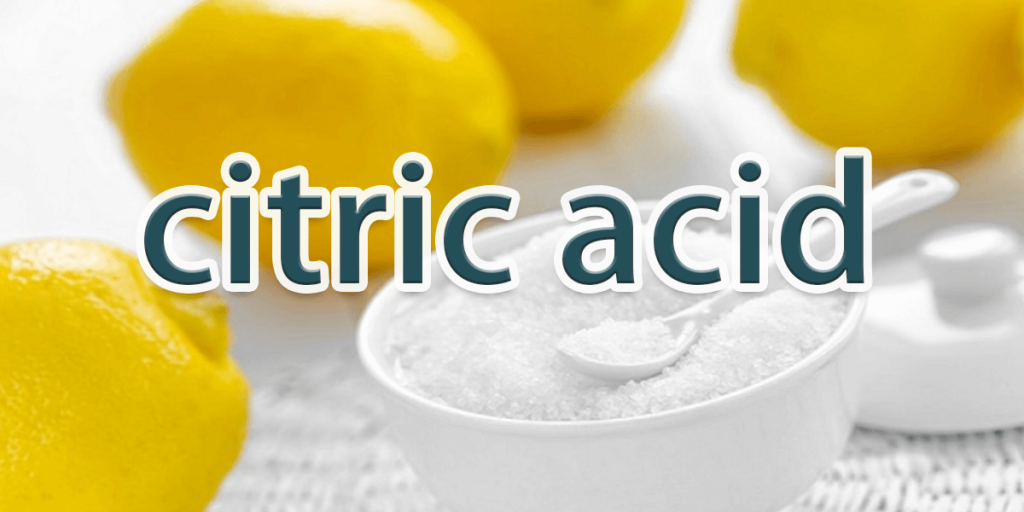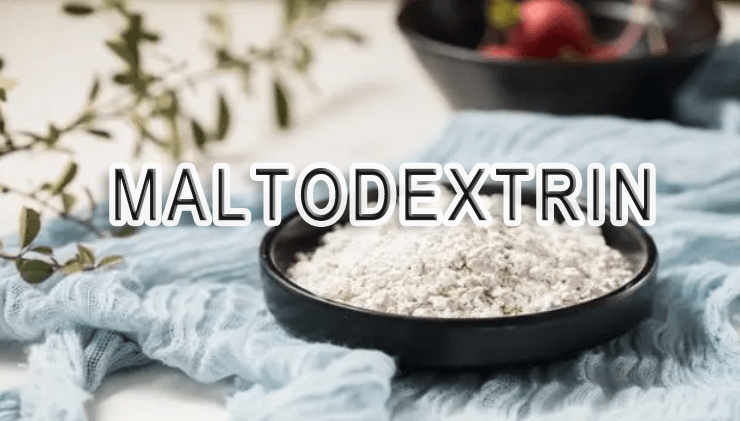プロピレングリコールについて何かご存知ですか?

プロピレングリコールについてご存知ですか?プロピレングリコール化学式C3H8O2、CAS番号:57-55-6。室温では無色透明のややシロップ状の液体で、水、エタノール、各種有機溶剤と混和する有機化合物です。また、蒸気として空気中に存在することもあり、ほとんど無味無臭である。プロピレングリコールの用途プロピレングリコールは工業用グレードとUSPグレードの2種類に分類される。工業、食品、医薬品など多くの産業で広く使用されている。それは水を吸収する合成液体物質であり、それは余分な水を吸収し、特定の医薬品、化粧品、または食品[...]の水分を維持するために使用されます。
モノステアリン酸グリセリンについてどのくらいご存知ですか?

モノステアリン酸グリセリンは分子式C21H42O4の有機化合物です。良好な界面活性を持ち、乳化、分散、消泡、でんぷん老化防止などの役割を果たすことができる。食品や化粧品に最も広く使用されている乳化剤です。用途乳化剤、共乳化剤、安定剤、保存料として使用できます。食品加工ではパン軟化剤、豆製品では消泡剤、乳製品、マーガリン、ケーキでは乳化剤や安定剤として使用されます。食肉製品、乳製品、ビール、醤油などの保存や果物の保存に使用されます。工業用シルク仕上げ剤や繊維用潤滑剤の乳化剤、[...]を
クエン酸の導入

クエン酸の紹介 クエン酸は、酸味とレモンのような香りを持つ有機酸で、広く使用されている。食品、医薬品、家庭用品、化学工業など幅広い分野で使用されています。本稿では、クエン酸の製品概要、適用範囲、ユニークな特徴、クエン酸を必要とする製品、およびその価格変動に影響を与える要因などを説明します。製品の説明クエン酸は、化学式C6H8O7の弱い有機酸である。白色の結晶性粉末で、水によく溶け、pHは約2.2です。クエン酸はレモン、ライム、オレンジなどの柑橘類から発酵または化学合成によって抽出される。応用範囲 クエン酸は、食品、医薬品、家庭用品、化学工業など様々な産業で幅広い用途がある。食品業界では、クエン酸は炭酸飲料、フルーツジュース、キャンディー、焼き菓子など様々な製品の香料、保存料、酸味料として使用されています。製薬業界では、クエン酸は医薬品のpHを調整したり、注射薬や経口薬の安定剤として使用されています。家庭用業界では、クエン酸は食器洗い機用洗剤、洗濯用洗剤、表面クリーナーなど様々な製品の洗浄剤として使用されている。化学業界では、クエン酸はキレート剤、緩衝剤、中間体として様々な化学物質の製造に使用されている。クエン酸のユニークな特徴 クエン酸にはいくつかのユニークな特徴があり、様々な用途に使用されている。第一に、柑橘類から抽出される天然物であるため、安全で無毒である。第二に、酸味とレモンのような香りがあり、食品や飲料の香料として人気がある。第三に、水によく溶けるため、さまざまな用途に使いやすい。最後に、生分解性で環境に優しいため、家庭用洗浄剤としても人気がある。クエン酸を必要とする製品 クエン酸は、さまざまな業界のさまざまな製品で必要とされています。食品業界では、クエン酸は炭酸飲料、フルーツジュース、キャンディー、焼き菓子などに使用されています。製薬業界では、クエン酸は内服薬や注射薬に使用されます。家庭用業界では、クエン酸は食器洗い機用洗剤、洗濯用洗剤、表面クリーナーなどに使用されている。化学業界では、クエン酸は様々な化学薬品の製造に使用されている。クエン酸の価格変動要因 クエン酸の価格は、原料価格の変動、生産コスト、市場の需要など、いくつかの要因によって影響を受けます。原料価格の変動、特に柑橘類の価格はクエン酸の価格に影響を与える可能性があります。エネルギー、人件費、設備費などの製造コストもクエン酸の価格に影響を与えます。クエン酸の市場需要も、特に需要が供給を上回った場合、その価格に影響を与える可能性があります。結論 結論として、クエン酸は様々な産業で幅広い用途を持つ汎用性の高い有機酸である。クエン酸は柑橘類の果実から抽出され、さまざまな用途に広く使用されている。クエン酸を必要とする製品は、食品や飲料製品、医薬品、家庭用洗剤、化学薬品をincludefood。クエン酸の価格は、原料価格の変動、生産コスト、市場の需要など、いくつかの要因に影響されます。
アルギン酸ナトリウムにご興味のある方はこちらをご覧ください!

アルギン酸ナトリウムにご興味のある方は、こちらをご覧ください!アルギン酸ナトリウムは、昆布やホンダワラ類(褐藻類)からヨウ素とマンニトールを抽出した後に得られる副産物です。天然の多糖類です。アルギン酸ナトリウムは白色または黄色の粉末で、ほとんど無臭無味です。アルギン酸ナトリウムは安全な食品添加物であるだけでなく、バイオニック食品や治療食品の原料としても使用されています。メリット:増粘作用に独自の利点があります。アルギン酸ナトリウムの優れた流動性により、添加した飲み物は滑らかな味わいになります。また、製品の消毒工程における粘度低下を防ぐことができます。アルギン酸ナトリウムの粘度を大幅に向上させることができます。アルギン酸ナトリウムは安定剤です[…]
マルトデキストリンの驚異を探る

マルトデキストリンの驚異を探る はじめに: マルトデキストリンは、そのユニークな特性と用途により、さまざまな業界で広く使用されている多用途の炭水化物です。 このブログ投稿では、マルトデキストリンの世界について詳しく説明します。 マルトデキストリンの種類: マルトデキストリンには、加水分解の程度と結果として生じる分子量を示す異なる DE 値があります。 DE 値が低いほど鎖長が長いことを示し、DE 値が高いほど鎖が短く、水溶性が高いことを示します。 これらの違いを理解することは、特定の用途に適切なマルトデキストリンを選択するために重要です。多様な用途: マルトデキストリンは、食品および飲料業界で幅広く使用されており、安定剤、増粘剤、充填剤として機能します。食感を改善し、風味を伝えやすくし、保存期間を延ばす能力により、マルトデキストリンは焼き菓子、乳製品、飲料などの貴重な成分となっています。さらに、マルトデキストリンは医薬品、パーソナルケア製品、工業用接着剤の製造にも使用されています。食品への影響: マルトデキストリンは、食品の配合において極めて重要な役割を果たします。そのユニークな特性により、口当たりを良くし、クリーミーな食感を与え、様々な食品用途において結晶化を防ぐことができます。スープやソースにコクを加えたり、粉末ミックス粉に滑らかな食感を与えたりと、マルトデキストリンは望ましい製品特性を実現するための貴重な成分として役立ちます。健康への影響:適度な量を摂取した場合、マルトデキストリンは一般にほとんどの人にとって安全であると考えられています。その迅速な消化と高い血糖指数により、アスリートや素早い燃料補給を必要とする人にとってのエネルギー源となります。しかし、糖尿病などの特定の健康状態の人は、血糖値を上昇させる可能性があるため、摂取量を監視する必要があります。 当社の市場:中国は世界のマルトデキストリン市場で重要なプレーヤーであり、かなりの輸出量を誇っています。競争力のある価格、高品質の製造プロセス、大規模な生産能力により、主要なマルトデキストリン輸出国としての地位を確立しています。当社は、ヨーロッパ、アメリカ、中東、東南アジアなどの市場に積極的に関与しています。マルトデキストリン市場のリーディングカンパニーとして、当社は高品質な製品を提供し、様々な地域のお客様の変化するニーズに応えることに尽力しています。マルトデキストリンにご興味をお持ちでしたら、ぜひお気軽にお問い合わせください[…]
ぜひGulfood Manufacturingにお越しください!

Gulfood Manufacturingにぜひお越しください!11月7日から9日まで、ドバイ世界貿易センターで開催される、唯一かつ最も影響力のある食品・飲料製造イベント、Gulfood Manufacturingに出展できることを大変嬉しく思います。ぜひお越しください!ブース番号は5番ホール、ブース番号はA5-16です。話題のトピックを深く掘り下げ、世界的な専門家と出会い、学び、食品原料の新しいイノベーションを体験する絶好の機会です。ぜひご参加ください。https://lnkd.in/ddkvDx9Nで登録して、今すぐeバッジを入手しましょう。
アスコルビン酸について一緒に学びましょう!

アスコルビン酸について一緒に学びましょう!ビタミンCは水溶性ビタミンで、L-アスコルビン酸とも呼ばれます。分子式はC6H8O6、分子量は176.12です。ビタミンCは通常、薄片状または粉末状で、無臭、酸味があり、水に溶けやすく、強い還元性を持っています。体内の複雑な代謝プロセスに関与することで、成長を促進し、病気に対する抵抗力を高めます。栄養補助食品、抗酸化剤、小麦粉改良剤として使用できます。ビタミンCは、還元剤、マスキング剤など、実験室での分析試薬としても使用されます。応用分野:食品業界:果物や野菜の保存、褐変防止、タンパク質の改善[…]
パラフィン・ワックス

パラフィンワックスの概要:パラフィンワックスは、石油由来の無色または白色の柔らかい固体ワックスです。主に直鎖アルカン系の長鎖炭化水素の混合物です。世界で最も一般的に使用されているワックスの一つであり、その多くの利点から様々な産業で広く使用されています。パラフィンワックスは通常、原油または石油を精製することによって製造されます。原油を加熱し、沸点に基づいて各成分を分離します。その後、溶媒抽出や蒸留などの様々な技術を用いて、パラフィンワックスを他の成分から分離します。CAS番号:8002-74-2 分子式/MF:CnH2n+2 HSコード:271220000 分類:石油 […]
最も一般的な化学添加物のひとつ:炭酸水素ナトリウム

最も一般的な化学添加物の一つ:重曹。物理的および化学的性質:無機化合物で、化学式はNaHCO3、CAS番号は144-55-8です。一般的には重曹と呼ばれ、白色の微細結晶です。水への溶解度は炭酸ナトリウムよりも低く、弱アルカリ性です。酸、アルカリ、塩と反応します。主な用途:食品加工において、重曹は最も広く使用されている緩め剤として、ビスケットやパンなどの製造に使用されますが、炭酸ナトリウムは作用後に残留するため、過剰に使用すると食品がアルカリ性になりすぎて風味が損なわれます。色は黄褐色です。[…]








